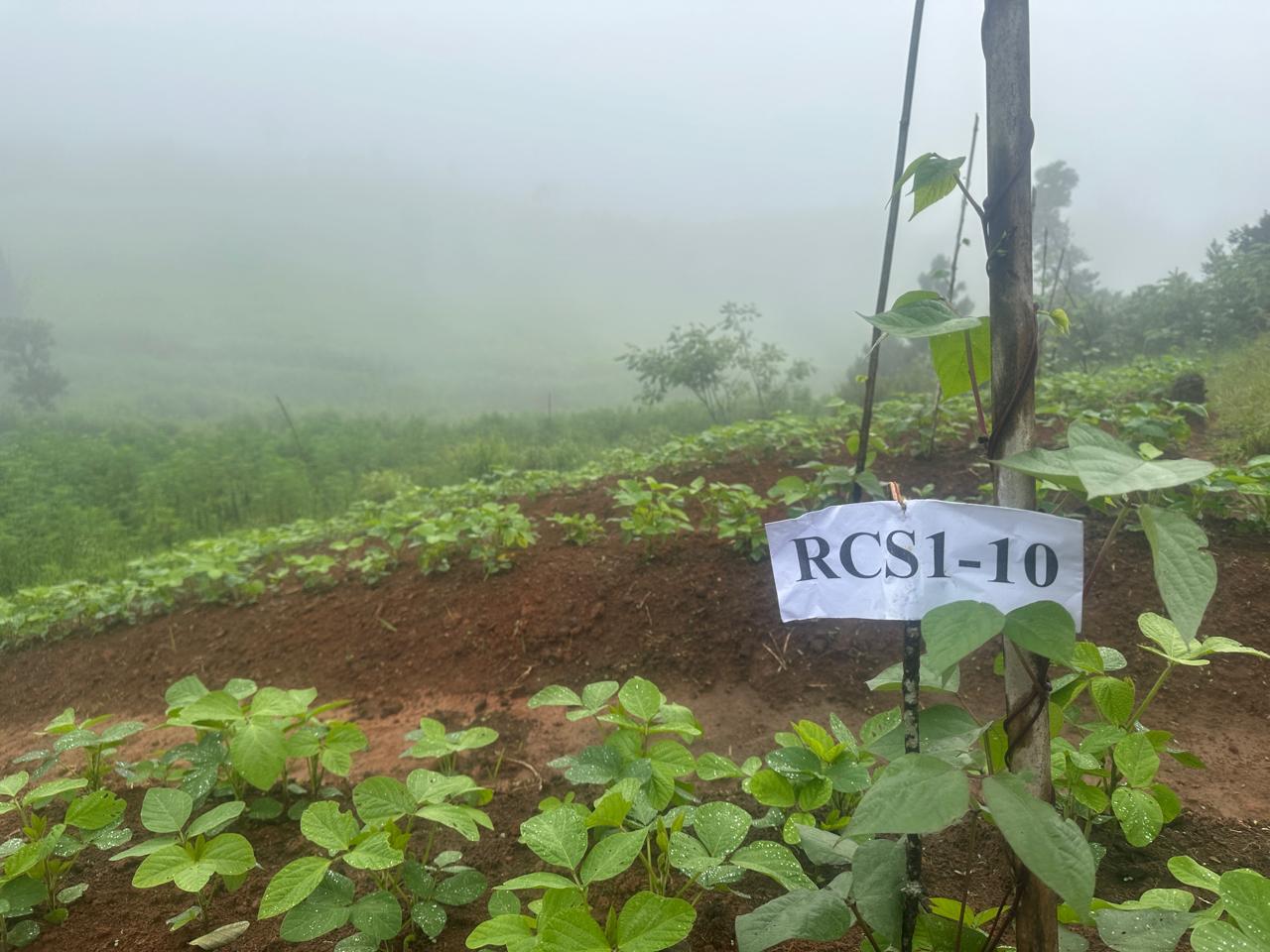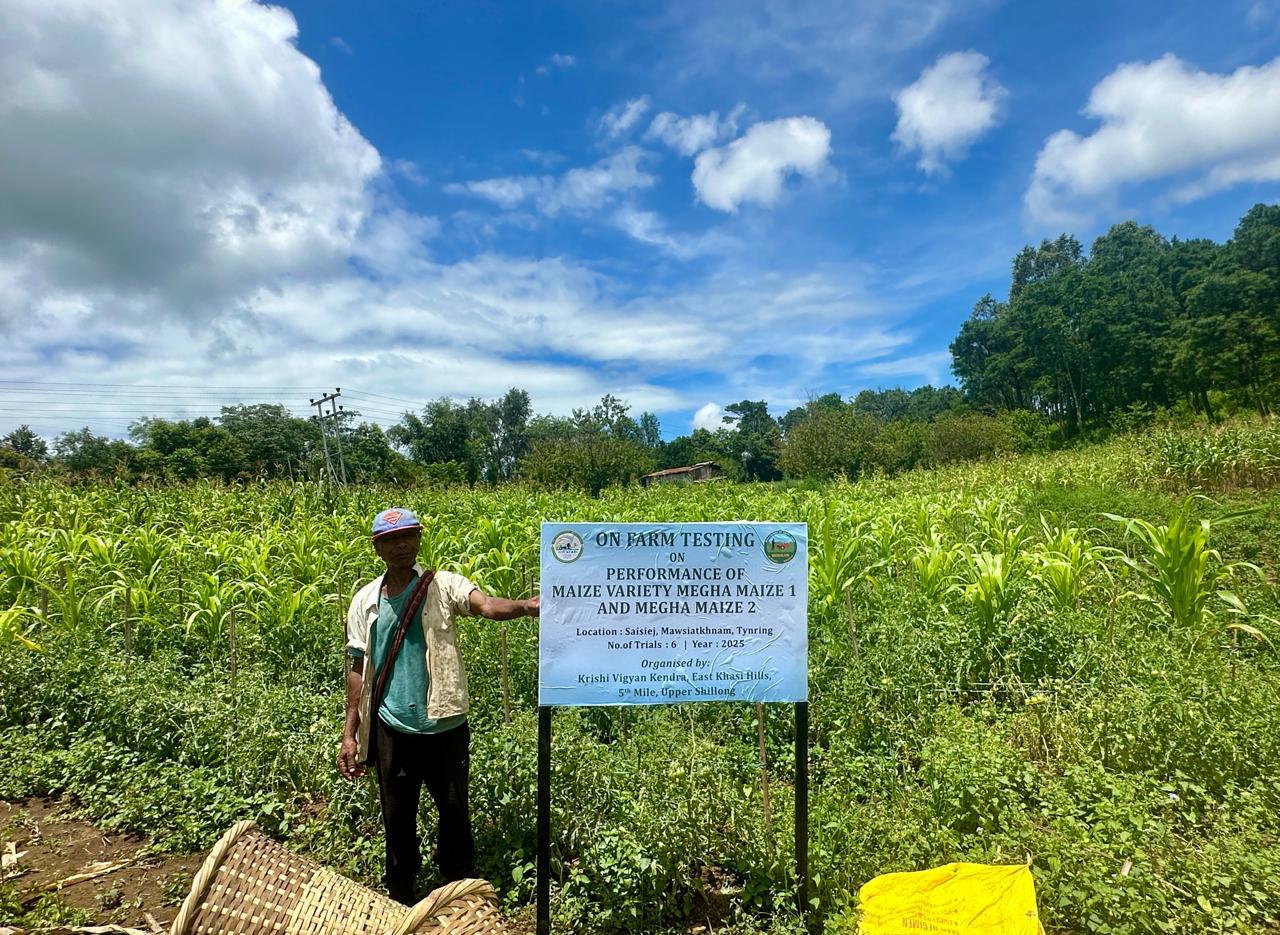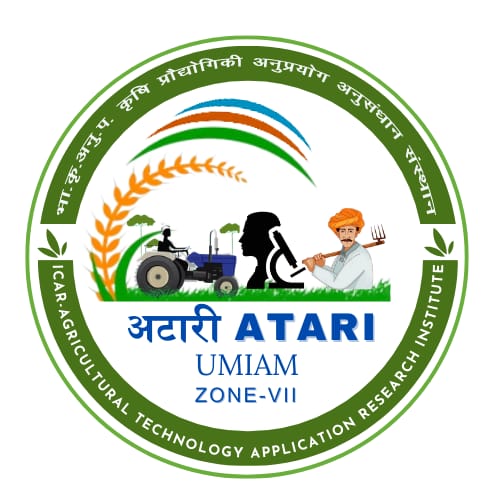| 2 |
Performance of Soybean var. RCS1-10, DSB19, MACS-1460 at Nongbsap and Warmatlah village |
The region typically experiences a subtropical highland climate, with moderate temperatures ranging from 12°C to 25°C, which is ideal for soybean growth. Soybeans generally require 20°C to 30°C for optimal growth.
MACS 1406 is a medium-duration variety (95-100 days).Known to perform well in regions with moderate rainfall and can tolerate mild drought.MACS1406 has a tolerance for varying temperatures, but extreme heat beyond 35°C can reduce yields.
RCS1-10 is a medium to late maturing variety (90-110 days).Tolerates a wider range of climatic conditions and can be grown in areas with more erratic rainfall patterns. It is resistant to many diseases and pest attacks.RCS1-10 would also do well in this region due to its resistance to common diseases and pests. Due to its disease resistance and relatively low maintenance needs, it could be a good choice for farmers looking for a reliable crop in areas with variable rainfall.
Both MACS1406 and RCS1-10 are well-suited to the district; however, initial field visits have revealed that MACS1406 struggled with poor germination, likely due to the heavy rainfall during the germination period. In contrast, RCS1-10 seems to offer better resilience to pests and adverse weather conditions. MACS1406 might still be a suitable option for farmers with limited space, while RCS1-10 would be more ideal for larger plots, offering stronger disease resistance and more consistent yields.
|
2025-07-21 |

Click image to View
|
| 3 |
Performance of Maize Variety Megha Maize 1 and Megha Maize at Tynring and Mawsiat Khnam village |
Both Megha Maize 1 and Megha Maize 2 varieties provide better yield consistency and growth rates compared to traditional cultivars. The average yields under improved management practices are a significant over local landraces, with the varieties performing well amid the region’s climate and soils. In summary, Megha Maize 1 and Megha Maize 2 varieties have demonstrated favorable performance in Laitjem, Saisiej, and Mawsiatkhnam through good adaptability, yield stability, and acceptance by local farmers in East Khasi Hills district.
|
2025-04-15 |

Click image to View
|






